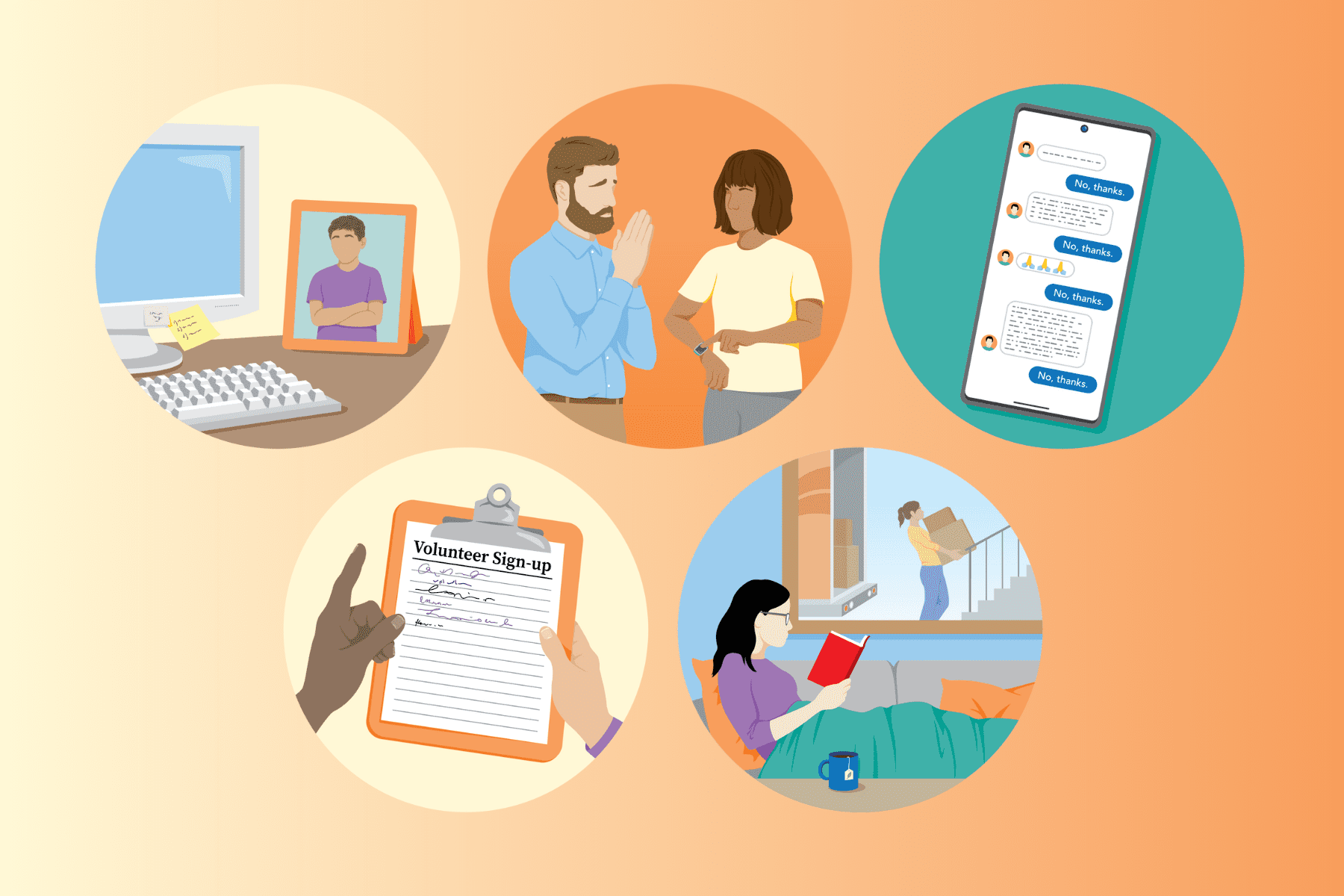Health
How to Say No Without Feeling Guilty


Learning to Say No
Many people struggle with saying no, fearing it may reflect negatively on their character or damage relationships. However, learning to say no can have numerous benefits, such as avoiding burnout and maintaining work-life balance. It's important to prioritize your time and understand the costs and benefits of saying yes or no to a request.
Clear Communication
When saying no, it's essential to communicate clearly and respectfully. Instead of simply saying "no," express gratitude for the consideration and provide a concise explanation, such as not having enough time at the moment. This helps reassure the other person that their request was appreciated and avoids any misunderstandings.
Practice and Preparation
If saying no makes you feel uncomfortable, practicing and preparing responses can be helpful. Identify common situations where you tend to feel pressured to say yes and brainstorm phrases to use in those scenarios. Having a planned response can make saying no feel more comfortable and less awkward.
Buying Time
If you tend to say yes impulsively, buying time can give you space to consider the request before responding. You can ask for some time to think about it or to check your schedule. This allows you to make a mindful decision and decline the request in a format that suits you best.
Delivery Matters
When saying no, it's important to be matter of fact and avoid over-apologizing. Maintaining a neutral tone and treating the situation as no big deal can set the right tone for the conversation. Just as you would order a sandwich without any fuss, saying no should be approached similarly.
Handling Persistent People
Some individuals may not easily accept a no. In such cases, it's essential to stick to your answer and avoid letting it evolve into a maybe or an okay. Repeat your response politely but firmly, and most persistent people will eventually understand and respect your decision.
Aligning Body Language
Your body language should align with your verbal response. Smiling, leaning forward, or parting with a friendly gesture can help convey that your no is about you and not a rejection of the other person. Avoid nervous or vulnerable body language, such as avoiding eye contact.
Remembering What Matters
When you find it challenging to say no, remind yourself of what you'll miss out on if you say yes. Keep an inspirational photo nearby that represents the things you value, such as your family or hobbies. This visual reminder can give you the strength to prioritize what truly matters to you.
Encouraging Others to Say No
As you become more comfortable with saying no, consider making it easier for others to decline your requests. By allowing them time to think and respond, you create a more respectful and understanding environment. Offer them a phrase or a way to decline that feels acceptable and comfortable to them.
Learning to say no without feeling guilty is a valuable skill that can lead to a healthier work-life balance and personal well-being. With practice and clear communication, you can confidently decline requests and prioritize your time and energy.


Hey there! I’m William Cooper, your go-to guy for all things travel at iMagazineDaily. I’m 39, living the dream in Oshkosh, WI, and I can’t get enough of exploring every corner of this amazing world. I’ve got this awesome gig where I blog about my travel escapades, and let me tell you, it’s never a dull moment! When I’m not busy typing away or editing some cool content, I’m out there in the city, living it up and tasting every crazy delicious thing I can find. Join me on this wild ride of adventures and stories, right here at iMagazineDaily. Trust me, it’s going to be a blast! 🌍✈️🍴









